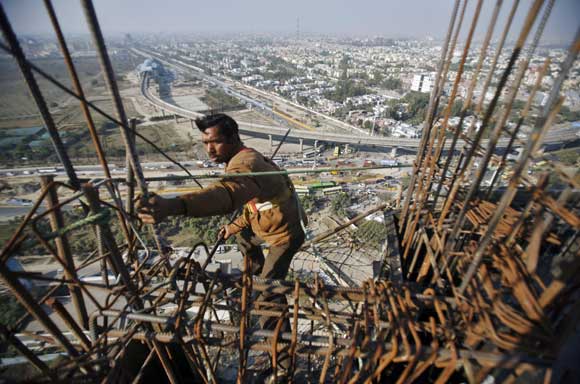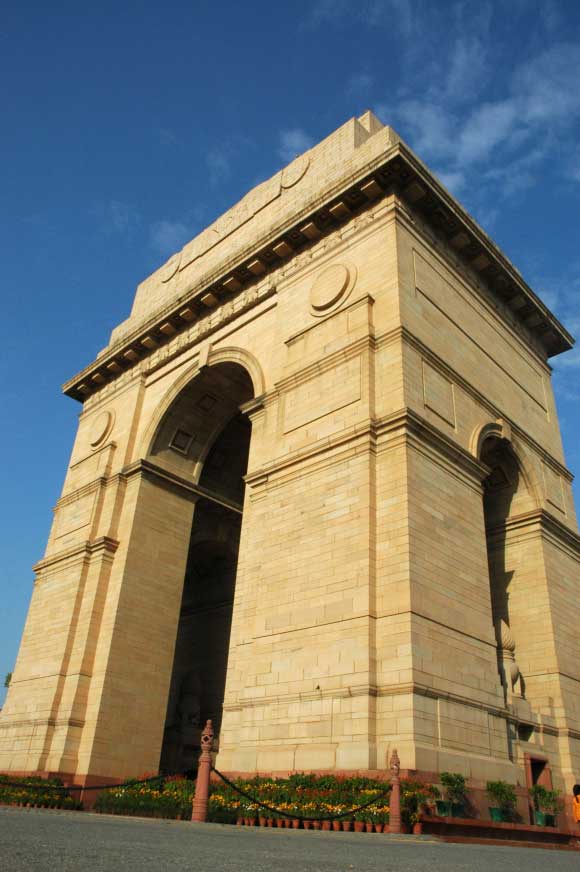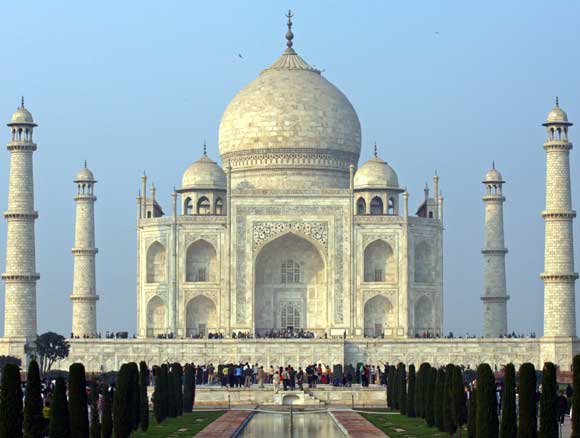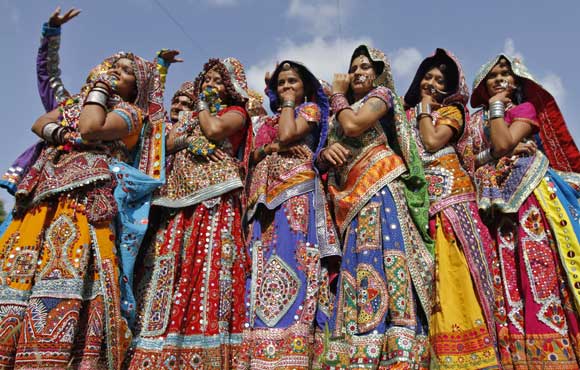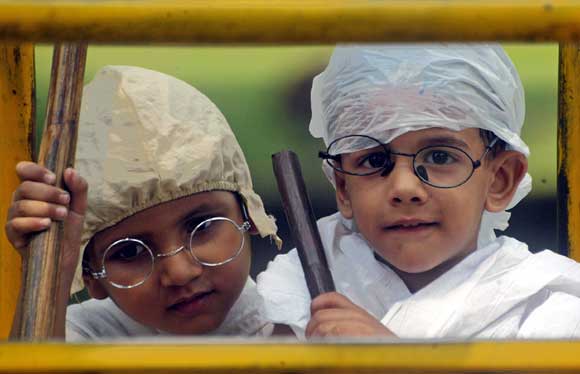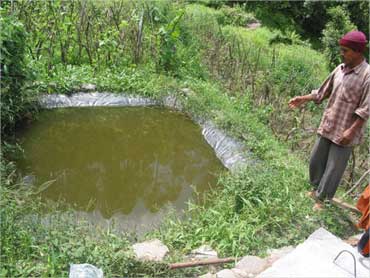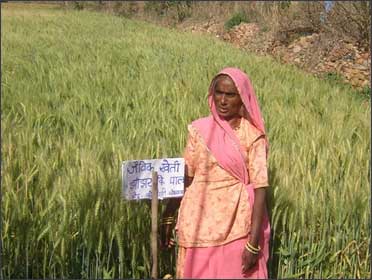 | « Back to article | Print this article |
Is India heading towards a great transformation?
The country must address the social, political and economic needs of the rapidly growing rural population around urban centres, writes Sonalde Desai.
As gleaming towers of Gurgaon compete with iconic images of rural India for the public mindshare, an almost overlooked revolution has begun to transform the Indian landscape.
A large proportion of Indian population has begun its journey towards an urban lifestyle -- we simply do not seem to know whether to call them villagers or townies.
These are not the residents of metro cities, not even rapidly growing smaller cities like Rajkot or Nashik.
These are people living in peri-urban areas that are increasingly swallowed up by bustling metropolises and those still classified as villagers in official parlance but who have taken their first step towards an urban lifestyle.
Clearest hints of this transformation emerge from the 2011 Census.
Click NEXT to read further. . .
Is India heading towards a great transformation?
As Professor Amitabh Kundu of Jawaharlal Nehru University notes, the number of urban agglomerations and other towns grew by 2,541 in all the 10 decades of the last century.
However, it has now gone up by 2,774 in just one decade. While it is always possible that this growth is an artefact of quiet changes in the Census methodology, other evidence also points to an ongoing rural transformation.
Census defines any area with population of over 5,000 where less than 25 per cent of the population is primarily engaged in agriculture as urban.
Agricultural employment has dropped steadily; National Sample Survey data document that employment of rural males in agriculture has declined from over 80 per cent in 1977 to about 62 per cent in 2009-10.
Click NEXT to read further. . .
Is India heading towards a great transformation?
Thus, a large number of villages may be either urban or close to urban in Census parlance but remain classified as villages for political purposes.
Moreover, if we adopt the United Nations definition of classifying any contiguous human settlement of over 10,000 people as urban, the proportion of urban residents in India would be at least 33 per cent higher, with much of this growth being concentrated in smallest towns that were hitherto designated as villages.
Large villages are substantially different from their smaller brethren.
Whether roads are more likely to reach larger villages or households shift closer to roads, village size and road access go hand in hand.
Click NEXT to read further. . .
Is India heading towards a great transformation?
In the 1,503 villages surveyed across India by India Human Development Survey, conducted by the National Council of Applied Economic Research and University of Maryland, about 70 per cent of all villages with population of 5,000 or more have a pucca road that is fully accessible in monsoon; in contrast, only 55 per cent of the smaller villages are accessible.
These larger villages also offer economies of scale and are far more likely to be home to banks, telephone network coverage, cable TV, private hospitals and schools.
Not surprisingly, non-agricultural job opportunities are more likely to be available to residents of these villages, because of greater diversity of employment within the village as well as greater ability to commute to nearby towns.
So, only 30 per cent of the employed males in larger villages are employed solely in agricultural work compared to 45 per cent in smaller villages.
Click NEXT to read further. . .
Is India heading towards a great transformation?
Larger size is not an unmitigated blessing.
Social structure is slow to change and growing economic opportunities sometimes exacerbate traditional fissures.
For example, with greater access to medical services, families are more likely to resort to sex-selective abortions and the likelihood of a male birth in larger villages is about 11 per cent greater than in smaller villages.
Similarly, growing economic opportunities seem more likely to be captured by upper castes, thus widening caste differences in a variety of outcomes, including education and income.
However, in spite of these concerns, overall human development outcomes seem far brighter in larger villages than in smaller ones.
Click NEXT to read further. . .
Is India heading towards a great transformation?
Children are more likely to attend school, teacher absenteeism is lower, and learning outcomes are higher.
Hospital deliveries are more prevalent and even NGOs seem more likely to be present.
I doubt that households in these large villages care whether we classify their homes as villages or towns.
But causes and consequences of this population agglomeration have tremendous public policy implications.
Our urban development policies to date, including the recommendations of the High-Powered Expert Committee for estimating the investment requirements for urban infrastructure services, have tended to focus on large cities.
Click NEXT to read further. . .
Is India heading towards a great transformation?
However, growth of large cities typically rests on rural-to-urban migration, which has been modest in size in India.
In contrast, growth of peri-urban areas and increased density along roadside have created an urban-like sprawl that stretches for miles outside most cities and towns, large and small.
By failing to identify these agglomeration through a highly restrictive definition used by the Indian Census, we tend to take a short-sighted approach towards infrastructure needs and social development.
Anyone who has spent a few hours on Bihar roads in smaller towns needs little persuasion that transportation choke points are not limited to large cities.
Click NEXT to read further. . .
Is India heading towards a great transformation?
A large number of rural residents tend to commute to urban areas daily for work.
A study by S Chandrasekhar based on NSS data estimates that about 13 per cent of the rural males commute for work.
These numbers highlight the vast transportation needs of non-metropolitan areas.
Political needs of these peri-urban and large rural agglomerations are even more complex.
While under the 73rd Amendment to the Constitution both small and large villages are expected to be governed through similar panchayati raj institutions, de facto political structures of the two differ sharply.
Click NEXT to read further. . .
Is India heading towards a great transformation?
Larger villages are more complex, usually contain many different castes, often have families that migrated from nearby villages, and have more out-migrants and commuter workers.
Not surprisingly, the political structures of these villages differ significantly from those of smaller villages with higher levels of distrust of public institutions and experience of local crime.
Given this context, PRIs, which rely on strong grass-roots participation and social cohesion, may be less effective and we may need to evolve governance mechanisms that are more akin to urban settings.
Consumer marketers have already recognised the diversity of Indian rural markets. Isn't it time our political institutions did the same?
The author is a Senior Fellow at NCAER and Professor of Sociology at University of Maryland College Park. Views are personal

